Tuesday 28 October 2014
Saturday 25 October 2014
Watching Friends Recover from Addiction on Facebook
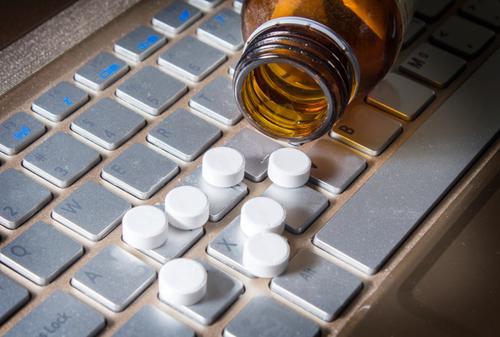 (Thinkstock)
(Thinkstock)
Through likes and comments, I’ve watched my hometown of Perry, Ohio, disappear into and come back from heroin addiction.
The U.S. is facing a massive heroin epidemic, and nowhere is it more evident than in Ohio, where fatal drug overdoses surpassed car crashes as the leading cause of accidental death in 2007, and increased by 60 percent from 2011 to 2012. Addicts in rehabilitation say heroin is the easiest drug to find. State legislators have called for Republican Gov. John Kasich to declare the prevalence of heroin a public-health emergency,
and in May he agreed to an Obamacare Medicaid expansion largely because
the state badly needed the federal help in funding treatment for heroin
addiction.
Perry, Ohio, is a microcosm of the epidemic, which is now infiltrating
upper-middle-class suburbs. Thirty minutes east of Cleveland, the town
of 1,500 has a median annual income $31,000 higher than that of Ohio
overall, but it also lacks opportunities for young adults to start their
lives. With the exception of the technical jobs offered by the nuclear
power plant — a definitive feature of the town — those without a college
degree travel to neighboring towns to work in retail or service
industries, and those with a degree rarely return. When I graduated high
school six years ago, most of the people in my class left Perry for
college, but many of those who stayed behind eventually turned to heroin
to cope with their anxieties about the future. Addiction to the drug is
growing most quickly
among people between the ages of 18 and 25, like the friends who fell
off my Facebook timeline as their lives became absorbed by their
addiction.
Over time, I forgot about many
of these people as I made new friends and experienced new things, and as
my Facebook feed became populated with photos of frat parties and
college football games. While I photo-bragged about crazy beer fests or
complained about all-nighters at the library, they posted less and less.
As they turned away from friends and family in real life for fear of
negative feedback, they turned away from Facebook, too. Richard Foster,
the executive vice president of treatment programs for Gateway
Rehabilitation Center in Pennsylvania, says active addicts are “not
talking to family and friends, and they’re not posting on social media
about their struggles.” In active addiction, he says, they are still in
denial, usually turning back to their friends, family, and social media
only when they are in stages of recovery and proud to share it.
Now, I’m seeing their names pop
up for the first time in years, with posts like “48 hours of sobriety
and all I’ve gotten is this lousy t-shirt,” and messages of
encouragement filling the comments. In contrast to the usual slew of
carefully choreographed photos of graduations, vacations, and weddings,
the raw honesty of these posts is striking. For heroin addicts, who must
cut ties with their communities of users as part of recovery, Facebook
is both a support system, connecting them back to relationships they had
before their addiction, and a venue that helps others understand the
fragility of the recovery process. For some in Perry who struggle with
heroin addiction, Facebook is a way to call for help and support. For
those of us who have left, their posts are stark reminders of the
reality of the problem ravaging our quaint hometown.
It was a post from a high school
class clown named Khari on Sept. 17 that alerted me that a friend had
passed away from an overdose that day. Comments like “Please get
healthy!” and “See? Don’t be messing with that stuff!” came flooding in
by the dozens. In high school, through puberty and awkward social
changes, Khari was funny, fearless, and blunt. When I called her after
seeing her post, she talked about the years since we graduated from high
school, the times she has been in and out of jail for heroin-related
crimes, and the friends and boyfriends who overdosed and died.
When I knew her at 19 years old,
Khari was against heroin; she says she was “one of those ignorant
profiling” people who chastised people who did it. But after seeing
friends leave town, she started feeling like she was missing out on life
and turned to heroin as a way to deal with the pains of the
quarter-life crisis.
She says that after the
most recent overdose death in Perry, the most difficult part for her was
seeing the online activity of old friends struggling to cope with the
pain of loss and the confusion that comes with addiction.
“I’ve been dealing with this on
and off for six years, so watching [people] I grew up with go through it
was really hard for me,” Khari says.
Emma is another Perry kid, one I
knew through mutual friends, who turned to heroin after high school.
She started smoking weed at age 12; by 15, she and her friends were
taking Oxycodone. At 17, her boyfriend taught her how to shoot up
heroin, saying that he was protecting her by showing her how to do it
safely. When her friends left for college, she moved into her
boyfriend’s grandmother’s basement, and she says that’s when things
turned for the worse. She felt like she didn’t have anything to look
forward to, that she was doing nothing with her life.
“I remember the day all my
friends left for college,” she says. “I was stuck in Perry and it just
made me want to get high even more.”
For the next six years, Emma was
in and out of relatives’ basements, friends’ couches, and rehab centers
in California and Florida for months at a time. Once, on a binge while
in treatment in California, she crashed the car of her employer into the
car of the owner of the rehab center. She was kicked out and moved back
to Perry to attempt to start her life over … again. She relapsed in 10
days, spending the next two months getting high and using up the entire
$6,000 she had saved.
Now seven months sober at a
different rehab center in California, she has been posting her progress
on Facebook routinely: “90 days sober!” received over 200 likes and
comments.
“There’s people [commenting]
that I haven’t seen in years, people that knew me from I was little,”
she says. “My mom’s friends are saying, ‘I remember when you were
little’ and saying that they are proud of me.” She says seeing people
from her childhood showing that they care helps keep her accountable for
her sobriety. The feedback confirms that a community cares about her
recovery. “It makes me feel really good, you know?”
Foster, the rehab-center
executive, says the shield of the screen may make people feel more
comfortable admitting they’ve been an addict than they would be in real
life. “It’s safer than going in to a room and saying ‘Hi, I’m Rich and
I’m an addict,’ ” he says.
But Angela, another classmate
who popped back on my timeline last year with an announcement of
newfound sobriety, is more skeptical of the role social media can play
in recovery. She says that while the encouragement from Facebook can be
uplifting, it doesn’t help people understand the intensity of addiction.
“Liking someone’s status about
clean time is a good way to remain supportive without too much risk,
especially for people you’ve been close to who have been hurt by broken
promises and relapse,” she says, but posting about her problems in the
throes of addiction would likely scare people away from reaching out.
“You can’t tell people, ‘I’m so sick, I’m dying, please give me money so
I don’t have to go … rob somebody.’ ”
At 16, Angela was smart, witty,
gorgeous, and always one step more mature than everyone else. She was
also a little harder than everyone else. She gave me my first shot of
moonshine in the stands at a football game before I knew what moonshine
was.
By senior year, she managed to
get a full academic scholarship to a private college in Ohio … and she
was shooting up heroin every other day. At high school graduation, where
she was summa cum laude, she missed walking across the stage because
she was dopesick — nauseated and vomiting from withdrawal — in the
bathroom. She tried to quit heroin before leaving for college, but ended
up going to school still addicted and dropping out before the first
quarter ended. The night she decided to quit college, she says, someone
from Perry paid her a visit and brought heroin.
“I just went to go on a dope run and I never came back,” she says. “It was always people from home.”
Ashamed of disappointing her
family, Angela says, she gave up completely on battling her addiction
after she dropped out. She became reclusive, lost friends. Her younger
sister shunned her completely. In the past six years, she has been to
rehab eight times and detox centers 20 times, and continues to struggle
with addiction while on house arrest today.
“I turn around and I think,
‘This isn’t what I planned for my life,’ ” she says, adding that she
sees posts from old friends about great life improvements, and she feels
like she missed out. “My friends have these great jobs, these great
lives, [they’re] buying houses and doing big things and I’m just
clueless,” she says. When I asked her what she sees on her Facebook
timeline from friends who do heroin, she says, “Mostly deaths.” But, she
says when she sees posts about sobriety and recovery from other
friends, it is motivating to pursue recovery and gives her hope that
it’s possible for her.
“You’ve seen that person down at
their worst, and then [when] you see them looking happy, it’s like, ‘I
can do this too,’ ” she says. “It’s like support groups, kind of, to see
that everyone is touched by it.”
Tuesday 21 October 2014
$8.5 billion profit: Demand for iPhone 6 gives Apple record-breaking quarter
SAN FRANCISCO: Apple's biggest cash cow, the iPhone, is gaining weight.
Sales of iPhones, including the new, big-screen iPhone 6 models released last month, helped carry Apple to a record-breaking quarter and offset slowing sales of one of Apple's other major products, the iPad, the company announced Monday. Apple sold 39 million iPhones in the quarter that ended Sept. 27, a significant bump from the 33.8 million it sold in the same period last year.
Apple appears to be gorging on consumer demand for its smartphone. The company's $8.5 billion in net profit for its fiscal fourth quarter was 13.3 percent higher than the same quarter a year ago. Revenue over the quarter was $42.1 billion, up from $37.5 billion in the same period last year.
"Demand for the new iPhones has been staggering," Timothy D. Cook, Apple's chief executive, said in a financial earnings call with investors. He added: "I've never felt so great after a launch before."
But impolite as it may be to point out in the middle of such exuberant returns, those numbers - while enviable for most companies - do pose some risk for Apple, which gets about 70 percent of its profits from the iPhone, said Toni Sacconaghi, a financial analyst for Sanford C. Bernstein research.
As with any company increasingly reliant on a single product, should development of that product falter or if competition from companies like Samsung grows even tougher, Apple would be vulnerable.
"Increasingly Apple is the iPhone story," Sacconaghi said.
Shares of Apple rose about 1.5 percent to $101.25 in after-hours trading Monday.
Phone sales have steadily grown even though overall sales of smartphones are slowing in developed markets like the United States and parts of Europe. But Apple has aggressively fought that trend. Last year, it for the first time released two new iPhone models instead of just one. Last month,Apple again released two new iPhones, this time with bigger screens.
The larger iPhone 6 and iPhone 6 Plus smartphones drew a strong reaction early. In the first weekend that the new iPhones went on sale in September, Apple sold 10 million of the devices, up from the 9 million new iPhones sold last year on their opening weekend.
In addition, Apple has teamed up with phone carriers in important markets, particularly China.
Apple's quarterly revenue beat Wall Street expectations for $39.9 billion, according to a survey of analysts by Thomson Reuters. Apple's $1.42 a share profit also exceeded analysts' expectations for $1.31 a share. For Apple's full 2014 fiscal year, profit was $39.5 billion on revenue of $182.8 billion.
Now for the bad news: The company on Monday said it sold 12.3 million iPads over the quarter, down from 14 million in the same quarter last year. The company's iPad sales were down in the previous quarter, too.
Apple also said it sold 5.5 million Macs over the quarter, a major improvement from the 4.6 million it sold in the same period last year. But the Mac is still small fry compared with the iPhone.
In the earnings call, Cook said Apple continued to be very bullish about the iPad's prospects. He noted that over four years, Apple had sold about 230 million iPads, which was double the number of iPhones it sold over the first four years.
Sales of iPhones, including the new, big-screen iPhone 6 models released last month, helped carry Apple to a record-breaking quarter and offset slowing sales of one of Apple's other major products, the iPad, the company announced Monday. Apple sold 39 million iPhones in the quarter that ended Sept. 27, a significant bump from the 33.8 million it sold in the same period last year.
Apple appears to be gorging on consumer demand for its smartphone. The company's $8.5 billion in net profit for its fiscal fourth quarter was 13.3 percent higher than the same quarter a year ago. Revenue over the quarter was $42.1 billion, up from $37.5 billion in the same period last year.
"Demand for the new iPhones has been staggering," Timothy D. Cook, Apple's chief executive, said in a financial earnings call with investors. He added: "I've never felt so great after a launch before."
But impolite as it may be to point out in the middle of such exuberant returns, those numbers - while enviable for most companies - do pose some risk for Apple, which gets about 70 percent of its profits from the iPhone, said Toni Sacconaghi, a financial analyst for Sanford C. Bernstein research.
As with any company increasingly reliant on a single product, should development of that product falter or if competition from companies like Samsung grows even tougher, Apple would be vulnerable.
"Increasingly Apple is the iPhone story," Sacconaghi said.
Shares of Apple rose about 1.5 percent to $101.25 in after-hours trading Monday.
Phone sales have steadily grown even though overall sales of smartphones are slowing in developed markets like the United States and parts of Europe. But Apple has aggressively fought that trend. Last year, it for the first time released two new iPhone models instead of just one. Last month,Apple again released two new iPhones, this time with bigger screens.
The larger iPhone 6 and iPhone 6 Plus smartphones drew a strong reaction early. In the first weekend that the new iPhones went on sale in September, Apple sold 10 million of the devices, up from the 9 million new iPhones sold last year on their opening weekend.
In addition, Apple has teamed up with phone carriers in important markets, particularly China.
Apple's quarterly revenue beat Wall Street expectations for $39.9 billion, according to a survey of analysts by Thomson Reuters. Apple's $1.42 a share profit also exceeded analysts' expectations for $1.31 a share. For Apple's full 2014 fiscal year, profit was $39.5 billion on revenue of $182.8 billion.
Now for the bad news: The company on Monday said it sold 12.3 million iPads over the quarter, down from 14 million in the same quarter last year. The company's iPad sales were down in the previous quarter, too.
Apple also said it sold 5.5 million Macs over the quarter, a major improvement from the 4.6 million it sold in the same period last year. But the Mac is still small fry compared with the iPhone.
In the earnings call, Cook said Apple continued to be very bullish about the iPad's prospects. He noted that over four years, Apple had sold about 230 million iPads, which was double the number of iPhones it sold over the first four years.
ectations
for $39.9 billion, according to a survey of analysts by Thomson
Reuters. Apple's $1.42 a share profit also exceeded analysts'
expectations for $1.31 a share. For Apple's full 2014 fiscal year,
profit was $39.5 billion on revenue of $182.8 billion.
Now for the bad news: The company on Monday said it sold 12.3 million iPads over the quarter, down from 14 million in the same quarter last year. The company's iPad sales were down in the previous quarter, too.
Now for the bad news: The company on Monday said it sold 12.3 million iPads over the quarter, down from 14 million in the same quarter last year. The company's iPad sales were down in the previous quarter, too.
efore."
But impolite as it may be to point out in the middle of such exuberant returns, those numbers - while enviable for most companies - do pose some risk for Apple, which gets about 70 percent of its profits from the iPhone, said Toni Sacconaghi, a financial analyst for Sanford C. Bernstein research.
As with any company increasingly reliant on a single product, should development of that product falter or if competition from companies like Samsung grows even tougher, Appl ..
But impolite as it may be to point out in the middle of such exuberant returns, those numbers - while enviable for most companies - do pose some risk for Apple, which gets about 70 percent of its profits from the iPhone, said Toni Sacconaghi, a financial analyst for Sanford C. Bernstein research.
As with any company increasingly reliant on a single product, should development of that product falter or if competition from companies like Samsung grows even tougher, Appl ..
efore."
But impolite as it may be to point out in the middle of such exuberant returns, those numbers - while enviable for most companies - do pose some risk for Apple, which gets about 70 percent of its profits from the iPhone, said Toni Sacconaghi, a financial analyst for Sanford C. Bernstein research.
As with any company increasingly reliant on a single product, should development of that product falter or if competition from companies like Samsung grows even tougher, Appl ..
But impolite as it may be to point out in the middle of such exuberant returns, those numbers - while enviable for most companies - do pose some risk for Apple, which gets about 70 percent of its profits from the iPhone, said Toni Sacconaghi, a financial analyst for Sanford C. Bernstein research.
As with any company increasingly reliant on a single product, should development of that product falter or if competition from companies like Samsung grows even tougher, Appl ..
Facebook Introducing Safety Check

In times of disaster or crisis, people turn to Facebook to check on loved ones and get updates. It is in these moments that communication is most critical both for people in the affected areas and for their friends and families anxious for news.
We want to provide a helpful tool that people can use when major disasters strike, so we’ve created Safety Check – a simple and easy way to say you’re safe and check on others.
During a major disaster, Safety Check will help you:
- Let friends and family know you’re safe
- Check on others in the affected area
- Mark your friends as safe
The 2011 earthquake and tsunami in Japan was devastating. According to the Japanese Red Cross, more than 12.5 million people were affected nationwide, and more than 400,000 people were evacuated. During that crisis we saw how people used technology and social media to stay connected with those they cared about.
Our engineers in Japan took the first step toward creating a product to improve the experience of reconnecting after a disaster. They built the Disaster Message Board to make it easier to communicate with others. They launched a test of the tool a year later and the response was overwhelming.
Unfortunately, these kinds of disasters happen all too frequently. Each time, we see people, relief organizations and first responders turn to Facebook in the aftermath of a major natural disaster.
These events have taught us a lot about how people use Facebook during disasters and we were personally inspired to continue work on the Disaster Message Board to incorporate what we’ve learned. This project soon became Safety Check, which will be available globally on Android, iOS, feature phones and desktop.
The team set out to create a simple and easy-to-use tool that allows people to connect with their network of friends and family when it matters most.
Here’s how it works:
When the tool is activated after a natural disaster and if you’re in the affected area, you’ll receive a Facebook notification asking if you’re safe.
We’ll determine your location by looking at the city you have listed in your profile, your last location if you’ve opted in to the Nearby Friends product, and the city where you are using the internet.

If we get your location wrong, you can mark that you’re outside the affected area.
If you’re safe, you can select “I’m Safe” and a notification and News Feed story will be generated with your update. Your friends can also mark you as safe.

If you have friends in the area of a natural disaster and the tool has been activated, you will receive a notification about those friends that have marked themselves as safe. Clicking on this notification will take you to the Safety Check bookmark that will show you a list of their updates.
If you’re ever in a situation that would require you to use Safety Check, we hope it’s a tool that helps you stay connected to those you care about, and gives you the comfort of knowing your loved ones are safe.
Friday 10 October 2014
Tuesday 7 October 2014
Facebook Closes WhatsApp Acquisition, Jan Koum To Match Zuckerberg’s $1 Annual Salary
Facebook is now the legal owner of WhatsApp, following a filing made with the SEC today. This is the final step in a process begun when Facebook announced its intent to acquire the messaging company in February of this year. The Facebook deal passed its final regulatory hurdle when it received EU approval to go ahead with the acquisition of WhatsApp last week.
In the filing, the company details the awarding of 177,760,669 shares of Facebook’s Class A common stock and $4.59 billion to WhatsApp stakeholders, plus 45,941,775 in restricted stock to WhatsApp employees to complete the deal. Koum will join Facebook’s board, and will also match Zuckerberg’s annual base salary of $1, without eligibility for the company’s bonus plan, though he does get a signing bonus of 24,853,468 restricted stock units as incentive for joining. Per the filing, Koum is joining Facebook with no fixed term of employment as part of the arrangement, but all indicators are that he wants to stick around to continue to build WhatsApp as a separate brand under the growing Facebook umbrella

In the filing, the company details the awarding of 177,760,669 shares of Facebook’s Class A common stock and $4.59 billion to WhatsApp stakeholders, plus 45,941,775 in restricted stock to WhatsApp employees to complete the deal. Koum will join Facebook’s board, and will also match Zuckerberg’s annual base salary of $1, without eligibility for the company’s bonus plan, though he does get a signing bonus of 24,853,468 restricted stock units as incentive for joining. Per the filing, Koum is joining Facebook with no fixed term of employment as part of the arrangement, but all indicators are that he wants to stick around to continue to build WhatsApp as a separate brand under the growing Facebook umbrella

Sunday 5 October 2014
8 Tips to Improve Your WiFi Network Performance
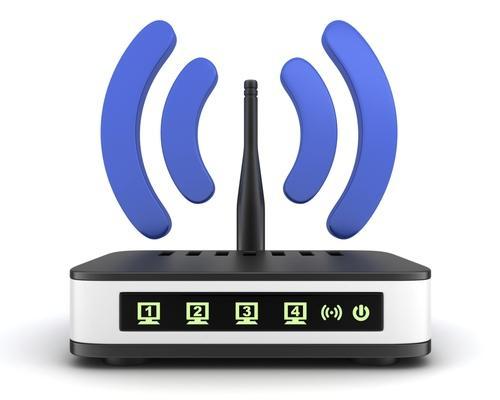 (Thinkstock)
(Thinkstock)
Odds are pretty good you loaded
this page over a WiFi network — or, as it is better known in my house,
that $#&*#$!! WiFi network. That’s because our wireless network
always chooses the worst possible time to crap out, like when we’re
getting to the thrilling climax of House of Cards on Netflix.
Still, it’s better than it used
to be. I’ve learned a few WiFi tricks over the years, and asked some
folks who know more than I do for a few more. If you’re happy with your
current WiFi setup, that’s fine. But if you want faster speeds, more
reliable performance, or to just get more use out of your network, try
the following eight tips.
1. Get up to speed.First,
let’s go over some basics. (If you’re already a WiFi wonk, you can skip
this paragraph.) WiFi does not actually mean “wireless fidelity.” Its
real name is a number: 802.11, the technical standard
for wireless networks first established by the Institute of Electrical
and Electronics Engineers (IEEE) in 1997. That number is always
accompanied by a letter (like a, b, g, or n) that indicates which
version it is. Generally speaking, each new version of 802.11 is faster
and more reliable than the last, but “higher” letters don’t always mean
faster speed. For example, 802.11a is faster than 802.11b. Go figure.
2. Prepare to pony up.The
newest WiFi standard, 802.11ac, is roughly three times faster than the
previous champ, 802.11n. In geek-speak, each 802.11ac antenna can move
up to 1,300 megabits of data per second (vs. a max of roughly 450
megabits for n). So I’ll just get this out of the way: The easiest and
fastest way to get more performance out of your WiFi network is to buy a
new 802.11ac router.
That’s especially true if you
haven’t bought a router recently. Technology has changed a lot over the
past two years, and devices built to work with 802.11ac (like the new iPhone 6 and 6 Plus) are coming out every day.
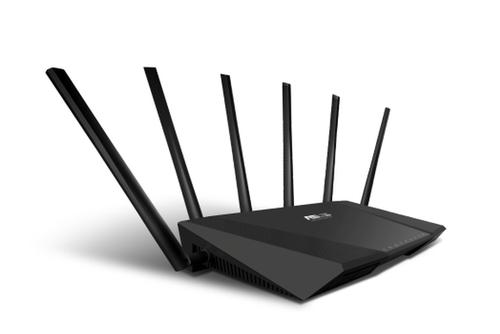
The
ASUS RT-AC3200 features six — count ’em, six — antennas, for a maximum
theoretical throughput of 3,200 megabits per second. (ASUS)
Older phones and laptops will
work fine with newer routers, though they won’t be able to take
advantage of the speed or other new features.
But the best 802.11ac routers
aren’t cheap. You can expect to drop from $100 to $300 on a new one.
(Or, if you’re a T-Mobile customer, you can get a free Personal CellSpot that’s really an ASUS ac router.)
But even with an older router, there are things you can do to squeeze better performance out of your existing gear.
3. Find the right spot.Start
by making sure you’ve put the router in the optimal place. Remember,
WiFi signals hate water. They’re also not too crazy about metal, glass,
brick, insulation, and human bodies; all these materials can impede the
signal, notes Sandeep Harpalani, director of product marketing for
router maker NETGEAR.
For the fastest, most reliable connection, put your router in an open
space, as centrally located and as high off the floor as you can.
4. Measure your signal strength.Just a couple of feet can make the difference between strong and wimpy WiFi reception. Mobile apps like Assia’s Cloudcheck or Amped Wireless’s Wi-Fi Analytics Tool let you walk through your home and identify dead spots, so you can figure out the best places to put your WiFi devices.
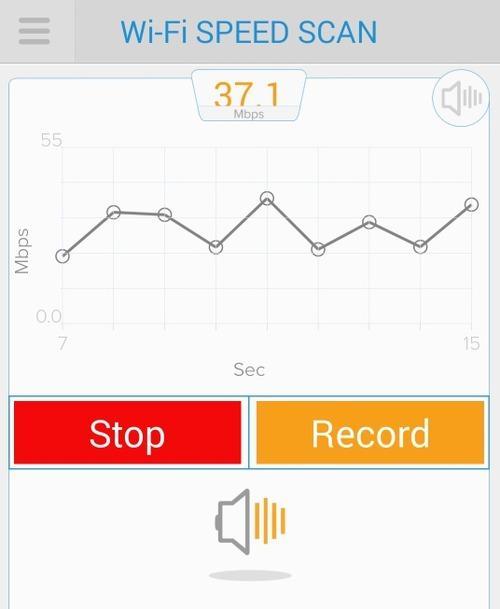
5. Messing with the antennas may help.If
your router has adjustable antennas, changing their angle can redirect
the signal and cover dead spots. Feeling crafty? Freeantennas.com offers
instructions on how to make a parabolic reflector
out of card stock and attach it to the antenna to boost the signal
(although a directed antenna like that will make the sweet spot
extremely narrow.)
If you have a new 802.11ac router, though, you probably won’t need this. They use a technique called beamforming
to focus the signal toward devices on the edge of your network, notes
Richard Najarian, senior director of wireless connectivity for Broadcom, which makes chipsets for wireless routers and other devices.
6. Try changing the channel.
Older WiFi routers are prone to interference from other devices operating in the same spectrum — which sadly includes microwave ovens, many cordless phones, Bluetooth headsets, or your neighbors’ wireless networks. Usually the router’s default settings work fine, but if your wireless signal seems flaky, you can dial up your router’s administration page and change the channel to see if things improve.
Older WiFi routers are prone to interference from other devices operating in the same spectrum — which sadly includes microwave ovens, many cordless phones, Bluetooth headsets, or your neighbors’ wireless networks. Usually the router’s default settings work fine, but if your wireless signal seems flaky, you can dial up your router’s administration page and change the channel to see if things improve.
Mobile apps like WiEye for Android
let you view all the wireless nets nearby to see what channels they’re
on. (Sorry, iPhone fans — Apple has banished WiFi scanners from the
iTunes Store; you’ll have to rely on a desktop app like WiFi Scanner for Mac or WiFi Channel Scanner for Windows.)
Most routers can use 11 channels
(specific radio frequencies) and are set at channel 1, 6, or 11 by
default, because these frequencies don’t overlap with one another. (So
if your neighbor’s network is broadcasting on 6, set yours at 1 or 11 to
avoid interference.) Routers that operate in the 5 GHz range (802.11a,
n, and ac) broadcast across 23 channels and are less prone to
interference, so there’s less need to futz with the channel settings.
You
can go into your router’s Web control panel to change channels; you may
also be able to use a router-specific app like NETGEAR genie or Cisco
Connect Express.
7. Use both bands.
Many routers have radios that operate on two frequencies, roughly 2.4 GHz and 5 GHz (each channel works on a specific frequency near that). So you can have two separate networks running at the same time, one for devices that access WiFi at the lower frequency and another for those that connect at 5 GHz. The higher band is less crowded and better for high-bandwidth uses like streaming video, says Joseph Yarak, director of marketing for Quantenna Communications, a WiFi chipset maker.
Many routers have radios that operate on two frequencies, roughly 2.4 GHz and 5 GHz (each channel works on a specific frequency near that). So you can have two separate networks running at the same time, one for devices that access WiFi at the lower frequency and another for those that connect at 5 GHz. The higher band is less crowded and better for high-bandwidth uses like streaming video, says Joseph Yarak, director of marketing for Quantenna Communications, a WiFi chipset maker.
8. Use wires when possible.As
fast as the newest WiFi standard is, a wireless connection still isn’t
as fast or reliable as a standard wired one. When possible, connect
bandwidth-hungry devices that stay in one location — like your Roku
streaming media boxes or Xbox gaming consoles — directly to your router
via networking cable, and save the wireless connections for the stuff
that moves around.
Questions, complaints, kudos? Email Dan Tynan at ModFamily1@yahoo.com.
6 Ways to Save Money on Your Electronics
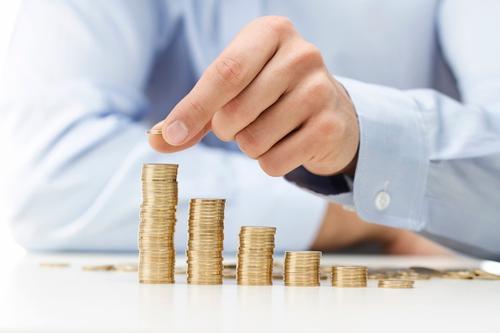
We love our gadgets, but they
sometimes cost us more than we expected — even after we bring them home.
Our experts have lots of tips on how to save money when it comes to
buying, using, and eventually selling your electronic devices. This
advice could save you hundreds of dollars a year.
1. Don’t buy expensive cables.“Prestige”
brands offer very high-priced cables: Some HDMI cables in the 6-foot
range sell for $100 or more, and longer cables can cost several times
that. But we’ve found that the modestly priced brands sold at most
consumer electronics stores and online for far less work just as well in
typical use. We’ve had no problems using 6-foot HDMI cables we bought
online for a few dollars. Any “high-speed” (Category 2) HDMI cable
should be adequate for connecting to a TV — even for 3D. Just avoid the
really cheap cables at dollar stores; those might have flimsy connectors
or inadequate shielding on the cable itself.
2. Check a printer’s ink usage before you buy.High ink or toner cartridge costs can
make a bargain-priced printer a bad deal in the long run. That’s why
Consumer Reports labs tests ink usage — including the ink used by an
inkjet printer just to maintain its print heads during intermittent use —
and factors that into our printer ratings. Also, look for a printer that uses separate color cartridges. This is generally more economical.
When you buy stuff can make a difference in price. Visit our guide to the best times to buy anything.
3. Sell your old devices.If your used gadget is still in good shape, you might be able to get some cash for it. Check out our guide to the best places to sell devices.
If you’re upgrading your device, ask the company you’ll be buying from
whether it takes trade-ins and gives a discount for them. And, for good
measure, here’s a guide to how to sell just about anything.
4. Unplug your devices.You
might be shocked by how much energy electronics suck up. Video-game
consoles draw lots of power, even when they’re off or in standby mode;
pulling the plug can put around $125 a year back in your pocket. If you
have a set-top box at home, consider trading it for one that meets
Energy Star’s tougher new 3.0 specification. Make sure your TV is set to
the energy-efficient Home mode. And save $75 or more a year on your
computer by using the standby or hibernate setting.
5. Negotiate a better deal.Try to negotiate a lower price on a new computer, tablet, or really, any electronics device — or even on a telecom bill.
You can often get a better price just by asking for it. It doesn’t hurt
to haggle anywhere, but you’ll probably have a better chance of getting
a price break at an independent store or regional chain than at a major
chain store. And even if you’re buying online, you should still try
for a better deal. Anecdotes from successful online hagglers indicate
that most of them negotiated by phone, although a few used email.
6. Don’t let your kids play games with in-app purchases.App
stores — especially Apple’s — have taken heat from consumers (and the
FCC) recently for making it too easy for kids to buy “gems,” “coins,”
and other items sold within games, sometimes racking up hundreds of dollars in bills. If you do allow your child to play such games, first read our guide on how to control in-app purchases.
Thursday 2 October 2014
You Can Now Download a Preview Version of Windows 10
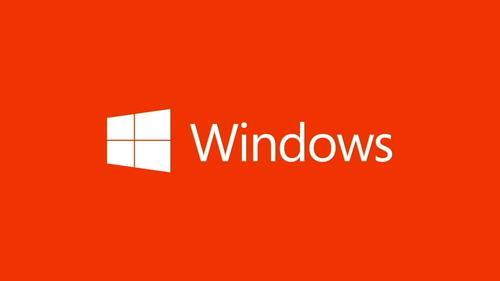
After offering a first look at
its forthcoming operating system yesterday, Microsoft is giving users a
chance to try out a version on their own machines. The Windows 10
preview is now available for download.
The new operating system will be
compatible not only with the PC but with a wide range of other devices
including Xbox consoles, smartphones, tablets and even connected
appliances. Microsoft also plans to offer a unified, cross-device apps
platform.
Windows 10 marks the return of
the Start menu, which provides quick access to frequently used files and
programs. The interface also includes a new area that users can
customize with links to their favorite apps and websites.
Another new feature is that
Windows Store apps will now be opened in the same way as programs
running on the desktop, meaning it will be possible to resize, move and
collapse them using the upper navigation bar.
Microsoft seeks to improve
multi-tasking capabilities in this latest version of Windows, which will
allow up to four apps to be open on the screen at once. Windows 10 also
makes it easier for users to create two desktops (personal and/or
professional) and to easily toggle between them.
Microsoft has not announced the
exact release date, but it is known that the final version of Windows 10
will not be available until spring 2015 at the earliest. The official
Windows 10 preview went up for for download October 1 at 12:00pm EDT.
Watch a video on Windows 10: youtu.be/84NI5fjTfpQ
Download the preview of Windows 10: preview.windows.com
Download the preview of Windows 10: preview.windows.com
Report: Advanced iOS Virus Targeting Hong Kong Protesters
Cybersecurity researchers have
uncovered a computer virus that spies on Apple’s iOS operating system
for the iPhone and iPad, and they believe it is targeting pro-democracy
protesters in Hong Kong.
The malicious software, known as
Xsser, is capable of stealing text messages, photos, call logs,
passwords, and other data from Apple mobile devices, researchers with
Lacoon Mobile Security said Tuesday.
They uncovered the spyware while
investigating similar malware for Google’s Android operating system
last week that also targeted Hong Kong protesters. Anonymous attackers
spread the Android spyware via WhatsApp, sending malicious links to
download the program, according to Lacoon.
It is unclear how iOS devices get infected with Xsser, which is not disguised as an app.
Lacoon Chief Executive Michael
Shaulov told Reuters that Xsser is the most sophisticated malware used
to date in any known cyberattack on iOS users.
“This is one the most
interesting developments we have seen,” he said. “It’s the first real
indication that really sophisticated guys are shifting from infecting
PCs or laptops to going after iOS devices.”

(Reuters)
The code used to control that
server is written in Chinese. The high quality of the campaign and the
fact that it is being used to target protesters suggests that it is
coming from a sophisticated attacker in China, Shaulov said.
“It is the first time in history
that you actually see an operationalized iOS Trojan that is attributed
to some kind of Chinese entity,” he said.
A Trojan is a term used by cyber researchers to describe malware that enters a device disguised as something harmless.
Still, he said his company’s research team has yet to identify any specific victims of the iOS Trojan.
Lacoon said on its blog that it
is possible the attackers might have deployed the Trojan in other
places, in addition to spying on pro-democracy protesters in Hong Kong.
“It can cross borders easily,
and is possibly being operated by a Chinese-speaking entity to spy on
individuals, foreign companies, or even entire governments,” they said
in a blog post describing their analysis.
Wednesday 1 October 2014
Everything You Need to Know (and Fear) About Facebook’s New Ad Network, Atlas
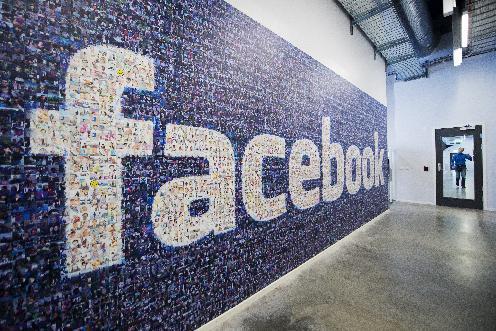 (AFP)
(AFP)
This week, Facebook announced the latest version of its advertising initiative, a network it has lovingly dubbed “Atlas.” Facebook has pitched it, on its own website, as a tool that “delivers people-based marketing” for clients.
That might automatically sound suspicious coming from a company known for its occasional disregard for individuals’ privacy.
So what does this fancy new money-making tool mean for us Facebookers? Below is a guide to everything you should know.
Wait, how is this different from the way Facebook has already been stalking me?Let’s
review how Facebook’s advertising platform functioned before Atlas. In
short, it collects data on its 1.3 billion users to sell targeted ads
that appear on its website.
It does this by combining what it knows about you as a Facebook surfer
and what it learns from your activities outside of Facebook via cookies
it installs in your browser that follow you around as you surf the Web.
You
know the old story: You look up a pair of amazing shoes you want to buy
that are clearly out of your price range. Then the shoes follow you
around on your favorite social networks for the rest of the week,
taunting you to purchase them.
Companies like
Google do this, too, but because Facebook has an absurd amount of
personal intel on you, this tactic has helped it become the
second-biggest ad-slinger in the world.
How is Atlas different?Cookies
don’t work as well on mobile apps, which presents a problem for
advertisers, who are hungry to penetrate that increasingly popular
digital space. Cookies also don’t tell advertisers what percentage of
people bought something after seeing it in an online or mobile
advertisement.
Atlas does both of those things.
Does that mean Atlas is hitting up brands and saying, “Yo, Alyssa bought your stuff after seeing your ad”?Not
exactly. Facebook itself knows who you are and whether you’ve clicked
through an ad on its site to buy something. But when it offers this
information to its clients, it doesn’t single out individuals and say,
“Alyssa Bereznak bought a new thing from Anthropologie;here’s her full
name, relationship history, and area of residence.”
Rather, Anthropologie will hand
Facebook a list of people who bought some of its gorgeous yet
prohibitively expensive rugs. Facebook then compares that list with the
number of people who saw Anthropologie ads and tells the company the
percentage of targeted users who actually bought those rugs.
This helps Anthropologie know
how successful its investment on the platform was. It doesn’t know that
you, specifically, dropped lots of bills on a rug — just how many did,
versus how many saw the ad.
Oh, so it’s not much different from other targeted ads online?Yeah,
except Facebook knows you much better. So even if Google can see from
your search history that you’re interested in new furniture, Facebook is
probably much more in tune with what’s going on with you, based on the
content of your posts (“Got a new apartment! Need to cover up some gross
spots on the floor but I love it!” and other fun stuff like that).
Is there a way to opt out of Atlas?There is! You can stop Facebook from following you around the Web by following the instructions here.
Should I be afraid or upset?This
depends on whether you’re one of those fatalistic people who has
willingly surrendered a large part of her privacy in order to function
in the modern digital world. I, for example, am mostly “meh” about the
whole thing.
That being said, lots of smart,
brand-fearing people are vigilant in their fight against advertising
tactics like these. I salute you for it and wish you luck building an
oasis of the Internet that’s not crawling with tracking tools. But,
remember, even companies that loudly pledge to protect your data will eventually find ways to please advertisers.
Where can I find out more?Facebook has set up a special website to inform members about Atlas. You can visit and “take a tour” of the Atlas system there.






